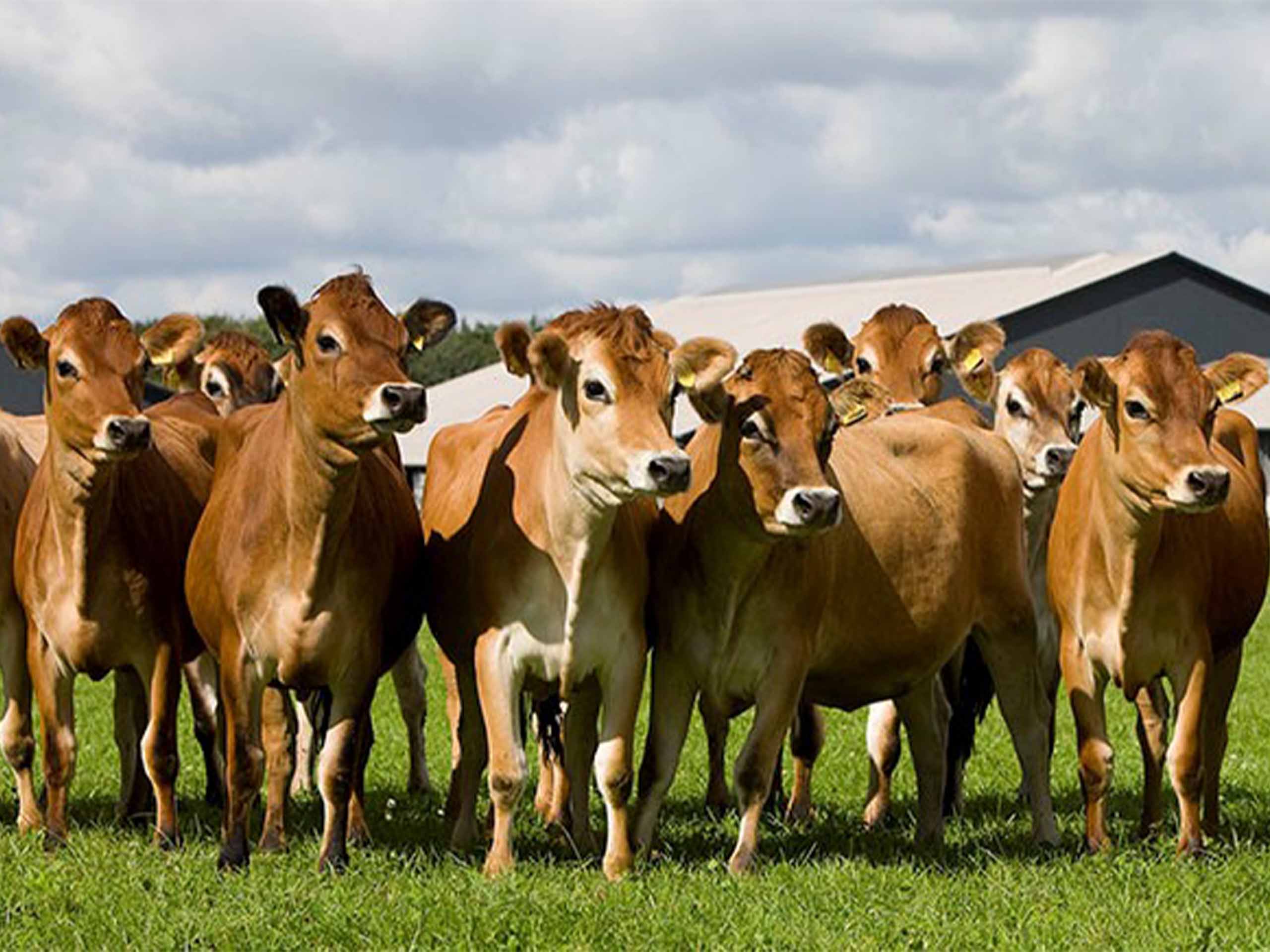EESTI PUNANE
Eesti punane veis on kujunenud eesti põlisveiste pideva ristamise teel angleri ja taani punase tõugu veistega. See ristamine algas 1800. aastate keskel, eesmärgiga luua tõug, mis toodab kõrge rasvasisaldusega piima ja suurendab piima tootlikkust. Aja jooksul nihkus rõhuasetus kaalu ja kehamõõtude parandamisele. Esimesed eesti punased loomad registreeriti tõuraamatusse 1885. aastal.
Tõu hakkas 19. sajandi lõpuks üle Eesti levima, kuigi paljud karjad kannatasid I ja II maailmasõja ajal kaotusi. Aastal 1916 oli karja arv 269 000 lehma, mis 1920. aastaks vähenes 225 000 lehmale. Tõu tugev eestkõneleja Jaan Mägi asutas 1919. aastal Eesti Angleri Tõuloomakasvatajate Seltsi, et toetada tõu arengut. 1928. aastal nimetas ta tõu ümber eesti punaseks ja sellest ajast alates on tõu populaarsust kogunud.
1993. aastal asutati Taanis Euroopa Punase Piimatõu Tõuühing, et parandada punaste tõugude majanduslikku elujõulisust, pakkuda aretajatele võimalusi ja hõlbustada Euroopa punaste veiste aretajate vahelist suhtlust, kusjuures Eesti Punane on üks viiest tunnustatud tõust. Viimase kümne aasta jooksul on eesti punase täiustamiseks kasutatud seitset eri tõugu - sealhulgas angler, taani punane, šveitsi, punane holsteini, norra punane, ayrshire ning rootsi punane ja valge -. Nüüdseks on tõug täielikult taastanud oma konkurentsivõimelise staatuse ja moodustab 63,3% kogu Eesti veistest.
Eesti punane veis on keskmise suurusega ja tugeva raami poolest. Nende karvkatte värvus varieerub helepunasest kuni tumepunase värvuseni, kusjuures pullid on tavaliselt tumedamad. Peamised kehamõõdud on järgmised: rinna kõrgus 127,5 cm, rindkere sügavus 70 cm, rindkere laius 45,5 cm, vöörihma pikkus 157,9 cm, südameümbermõõt 195,6 cm ja koonuümbermõõt 18,3 cm. Täiskasvanud lehmad kaaluvad 450-550 kg, maksimaalselt 780 kg, samas kui täiskasvanud pullid kaaluvad tavaliselt 800-900 kg, maksimaalselt umbes 1000 kg. Vastsündinud vasikad kaaluvad 31-33 kg.
164 900 hinnatud lehma keskmine piimatoodang on 3,456 kg ja rasvasisaldus 3,92%. 77 aretusfarmil on Eesti punase veise keskmine piimaand 3,784 kg lehma kohta, rasvasisalduse 3,98% ja valgusisalduse 3,30% juures. 12 kõrgema tootlikkusega karjas on keskmine piimatoodang 305-päevase laktatsiooni jooksul vahemikus 4 127-5 029 kg, rasvasisaldusega 3,90% kuni 4,18%. Nende karjade rekordiomanikud on järgmised: lehm 5338 (5. laktatsioon, 9 610 kg piima, 4,14% rasva), lehm 4519 (7. laktatsioon, 8554 kg piima, 4,47% rasva) ja lehm 2431 (2. laktatsioon, 7 806 kg piima, 4,65% rasva).
Eesti punase tõu täiustamist püütakse saavutada nii puhtalt aretamise kui ka ristamise kaudu Taani punase ja angleri veistega. Angleri verega uue tüübi puhul loodetakse saavutada vähemalt 7000 kg piimatoodangut 4,0% rasvasisaldusega, 1,9 kg minutis lüpsimiskiirust, üle 600 kg eluskaalu ja vähemalt 140 cm rinna kõrgust.










